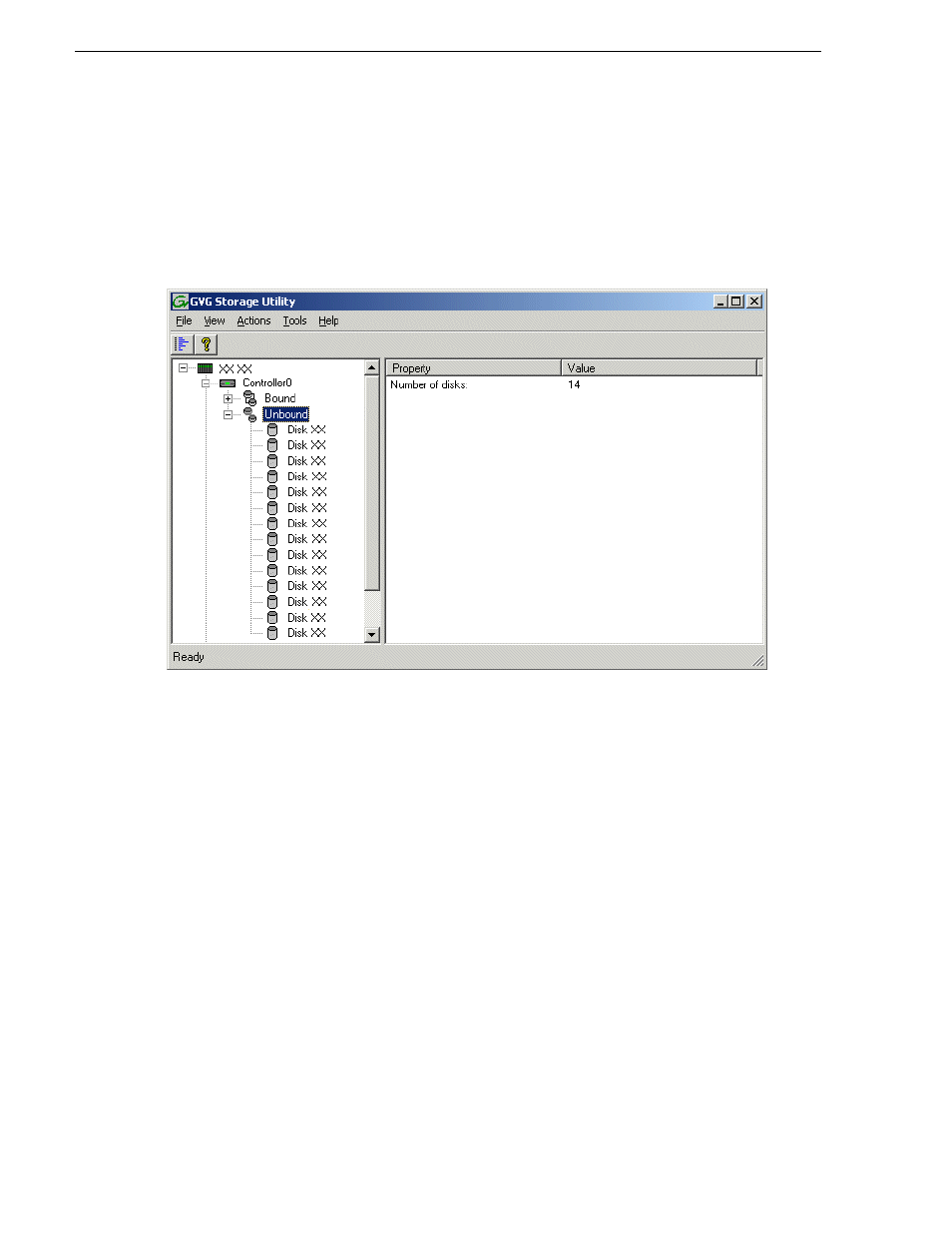Grass Valley K2 Storage System Instruction Manual v.3.2 Sep.24 2007 User Manual
Page 274

274
K2 Storage System Instruction Manual
September 7, 2007
Chapter 6 Installing the Nearline Storage System
NOTE: Binding destroys all user data on the disks.
1. In the Storage Utility main window, identify bound RANKs and unbound disks by
their placement in the hierarchy of the tree view. In the following illustration, disk
numbers are represented by “XX”. Refer to
“Identifying disks” on page 744
for an
explanation of how disks are actually numbered in Storage Utility.
Nearline systems store metadata files and journal files on the primary RAID
chassis, which requires a RAID 1 RANK (two disks) for metadata storage and a
RAID 1 RANK (two disks) for journal storage. On a Nearline system, these disks
must be Fibre Channel disks. The RAID 1 RANKs must be bound from the first
four disks (counting from left to right as you face the front of the RAID chassis) in
the primary RAID chassis. These disks must be 15K rpm drives. In addition, the
fifth disk in the primary RAID chassis (also a 15K drive) is bound as a Hot Spare.
This fifth 15K disk then provides Hot Spare functionality for the other four 15K
disks (the RAID 1 RANKs) only. Refer to
“Binding Hot Spare drives” on page 751
for more information.
View disk properties and identify the four disks you will use for the RAID 1
RANKs, the one 15K Hot Spare disk, and the remainder of the disks that are
available for media storage RANKs. Make sure you select disks appropriately as
you bind RANKs in the remainder of this procedure.
View disk properties and identify the four disks you will use for the metadata/
journal RAID 1 RANKs, the one metadata/journal Hot Spare disk, any other disks
that you intend to use for Hot Spares, and the remainder of the disks that are
available for media storage. Make sure you select disks appropriately as you bind
disks in the remainder of this procedure.
2. For systems that use RAID 1 RANKs, you must now create the separate RAID 1
storage for metadata files and journal files. To bind unbound disks for metadata and
